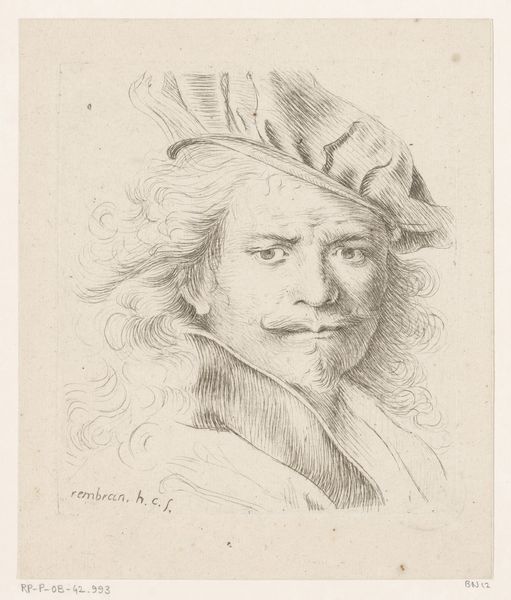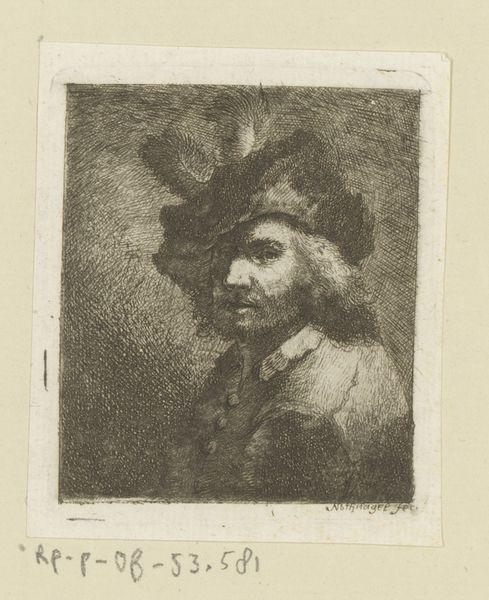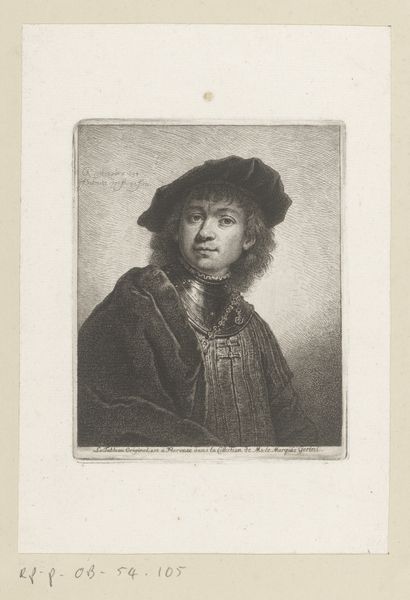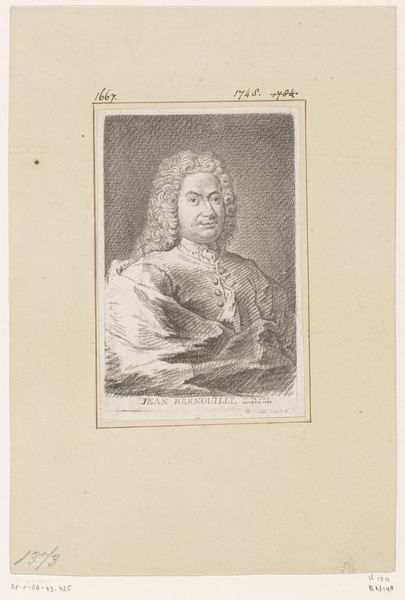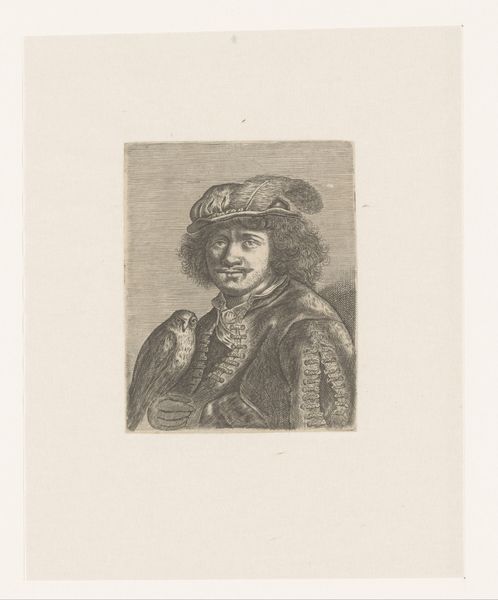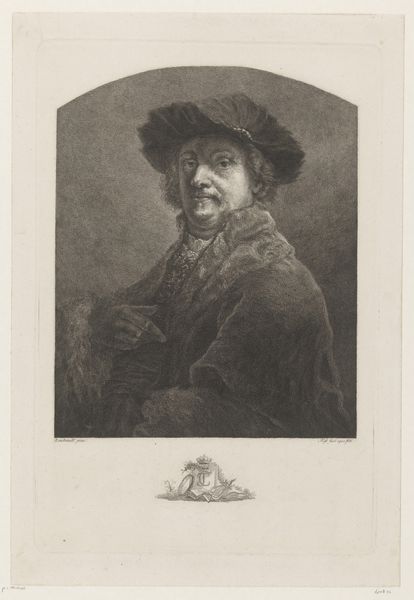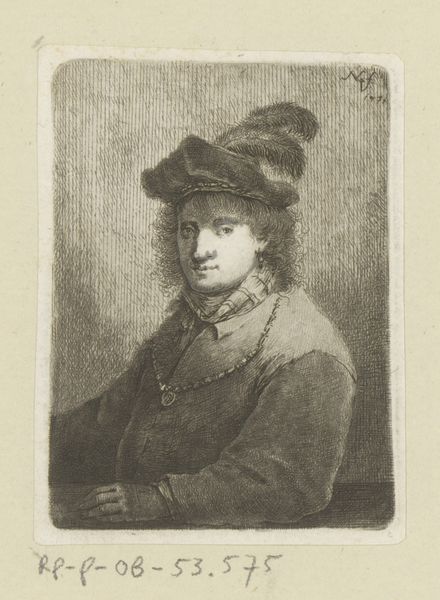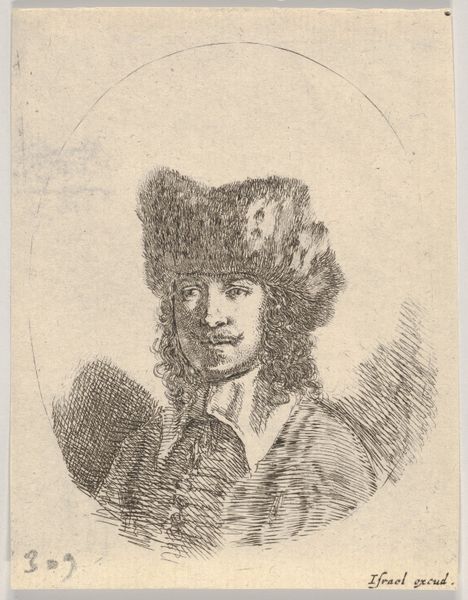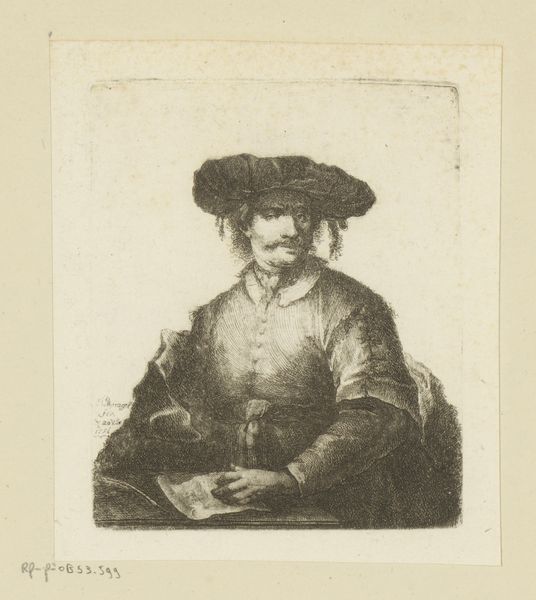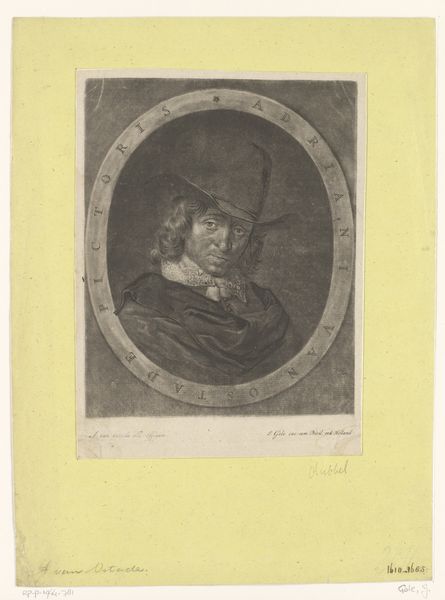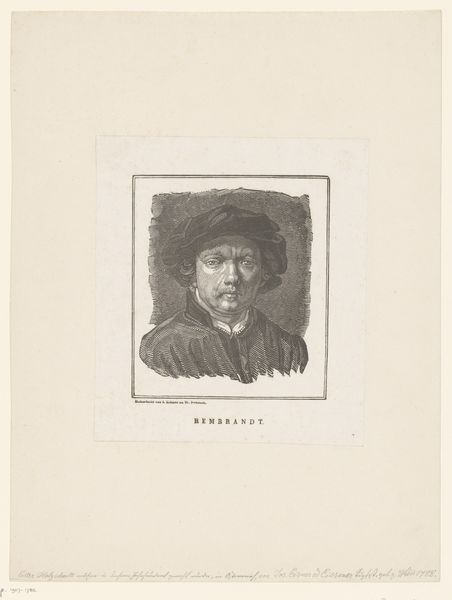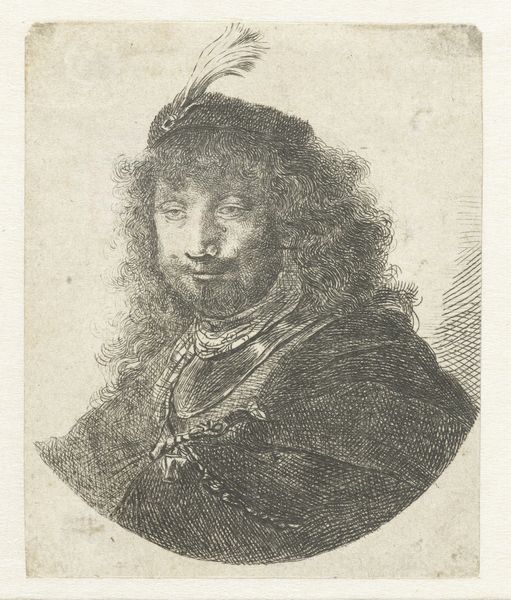
print, engraving
#
portrait
#
neoclacissism
# print
#
engraving
Dimensions: height 221 mm, width 184 mm
Copyright: Rijks Museum: Open Domain
Curator: This is Johann Friedrich Bause's "Man met bontmuts," dating back to 1782. It’s an engraving, a testament to the printmaking techniques prevalent at the time. Editor: Immediately, I’m struck by the texture. You can almost feel the weight of that fur hat and collar. There's a stark realism despite it being an engraving. Curator: The Neoclassical influence is evident. It’s more subdued, focusing on individual portraiture rather than grand historical narratives. We see the rise of the middle class reflected here. The man seems…sturdy. Editor: The materiality here is really fascinating, especially considering Bause was a renowned engraver, elevating printmaking to high art. The subject's status, represented by the expensive fur, speaks volumes. What’s also curious is who this man was. Was it purely for artistic merit, or something more commissioned? Curator: Precisely. This piece blurs the lines between craft and high art, reflecting the changing dynamics of art production and consumption. I think the social context of the piece is inseparable from understanding Bause’s motivation. What was the access and role of art during that period for middle class and upper middle class folks? What messages about power and status were prints and portraits able to convey at that time? Editor: I do see a contradiction, in the subject’s garb, he doesn’t seem particularly neoclassicist to me. The loose curls, and the very Dutch looking hat. It’s something that the engraving allowed Bause to capture, the small details, rather than focusing on ideal forms. What did an artist such as Bause represent during his time? Was he subversive or following convention by imortalizing the average dutch man through this form? Curator: It certainly poses compelling questions about art’s role. Perhaps it shows art moving to embrace greater realism. This piece makes you think not only about the process, the how, but the socio-economic landscape that enables its creation. Editor: Absolutely. It also leaves you pondering about Bause's techniques. His craft, so vividly captured here. This is also the power of art, to provide conversation and engage and teach others about historical context through material.
Comments
No comments
Be the first to comment and join the conversation on the ultimate creative platform.
